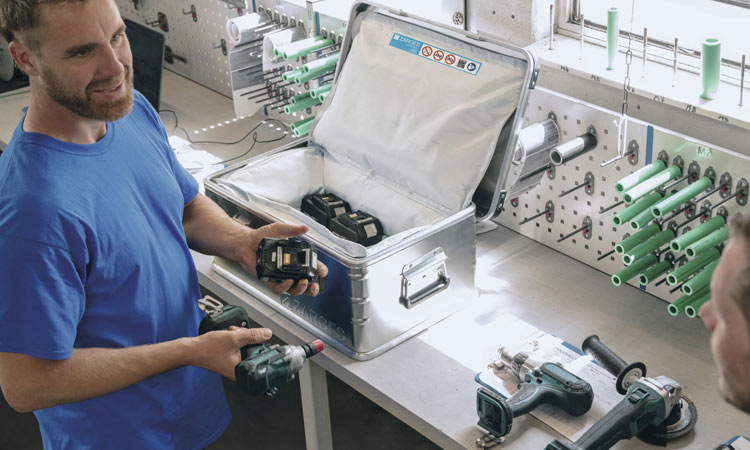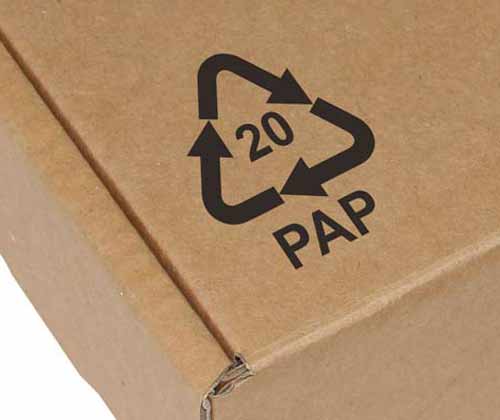
Legal requirements for lithium battery packaging
There are a number of regulations that directly affect lithium battery packaging. These aim to limit the potential for fires, explosions, and thermal runaway, the latter of which can cause catastrophic self-heating of the batteries.
Lithium battery packaging must adhere to specific requirements set by transport bodies, including guidelines specified in the IATA Dangerous Goods Regulations, the IMDG Code, and the ADR (European Road Transport). Being classified as dangerous goods, the UN 3480 and UN 3481 regulations also apply. Lithium battery packaging also requires the use of strong outer packaging that must protect batteries from short-circuiting and feature appropriate markings and labels.
GWP Group supplies a limited range of lithium battery packaging, primarily aluminium cases for the safe transit of larger batteries, those which are damaged, and/or prototypes.

Table of contents
The following regulations apply to the packaging of lithium batteries in the UK. Please note this list is not exhaustive, and is subject to change as regulations are updated, introduced or replaced. Not all regulations apply to all forms of lithium battery packaging.
- UN Manual of Tests and Criteria – UN 38.3
- ADR – European Agreement Concerning the International Carriage of Dangerous Goods by Road
- IMDG Code – International Maritime Dangerous Goods Code
- ICAO Technical Instructions for the Safe Transport of Dangerous Goods by Air
- IEC 62281 – Safety of Primary and Secondary Lithium Cells and Batteries during Transport
- BS EN 61340-5-3 – Electrostatic Control for Packaging
UN Manual of Tests and Criteria - UN 38.3 (6th Edition or later)
This is a required global testing standard for lithium cells and batteries, and only batteries that pass UN 38.3 can be legally transported. Packaging must protect tested batteries from:
- Short circuits
- Crushing, puncturing, excessive vibration
GWP Group statement
Although GWP can supply a limited range of packaging that can prevent short circuiting and damage to lithium batteries, the actual testing of batteries to UN 38.3 is the responsibility of the battery manufacturer.
More information
ADR - European Agreement Concerning the International Carriage of Dangerous Goods by Road
This standard applies to lithium battery shipments by road in the UK and EU. It requires UN-compliant packaging and labelling:
- UN 3480 (Lithium-ion batteries)
- UN 3481 (Lithium-ion batteries in/with equipment)
- UN 3490 (Lithium metal bateries)
- UN 3091 (Lithium metal in/with equipment)
Also requires fire-resistant inner packaging and short-circuit protection.
GWP Group statement
GWP Group can supply aluminium battery boxes suitable for transporting lithium batteries. However, this is typically for returnable applications, or where the lithium battery is relatively large, expensive, a prototype, or damaged. GWP Group do not currently supply corrugated packaging for consumer applications where lithium batteries are included in consumer goods. Our parent company, Macfarlane Group, may be able to assist with specific requirements.
More information
IMDG Code - International Maritime Dangerous Goods Code
The strictest rules for lithium battery shipments by air.
Lithium batteries require packaging under:
- Section IA or IB (fully regulated).
- Section II (smaller quantities – limited packaging relief).
The code also states that:
- You must use pressure-tested packaging (UN-certified).
- Inner packaging must prevent movement, damage, and short-circuits.
- Batteries over 100 Wh (Li-ion) or 2g lithium (metal) require cargo-only transport.
- Overpack limits, marking, and handling labels are strictly enforced.
GWP Group statement
GWP Group can supply aluminium cases for shipping lithium batteries by air (which include appropriate inserts for preventing fires/damage).
More information
ICAO Technical Instructions for the Safe Transport of Dangerous Goods by Air
The basis for IATA Dangerous Goods Regulations, issued by the UN’s aviation body. It reinforces testing, packaging, and documentation requirements for air shipments.
GWP Group statement
Whilst not specifically working towards ICAO Technical Instructions, the aluminium battery cases we supply may be suitable for such purposes. Further checks on the specific application would be required.
More information
IEC 62281 - Safety of Primary and Secondary Lithium Cells and Batteries during Transport
The international safety standard for battery transport. It provides packaging design guidance and test procedures and aligns with UN and IATA rules.
GWP Group statement
Whilst not specifically working towards IEC 62281, the aluminium battery cases we supply may be suitable for such purposes. Further checks on the specific application would be required.
More information
BS EN 61340-5-3 - Electrostatic Control for Packaging
The Electrostatic Discharge (ESD) protection standard. It is important for packaging lithium batteries and electronics, and helps prevents ignition or battery damage from static.
GWP Group statement
GWP Group manufactures a wide range of ESD-safe packaging solutions. To date however, these have not been for applications involving lithium batteries. Please contact a member of our team to discuss your specific requirements in more detail.
More information
Disclaimer
The information provided on this page is intended as a guide only. GWP can accept no responsibility or liability for loss, damage or any other consequence of reliance on this information, howsoever caused. As all applications and scenarios vary, it is your responsibility or the responsibility of your business to ensure that any products or items you manufacture and/or distribute comply the regulations applicable to your specific circumstances. If in any doubt, please check with the appropriate regulatory body.









































